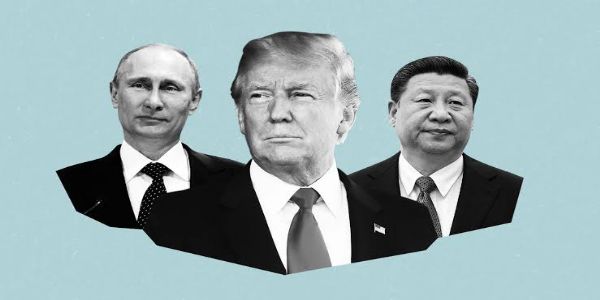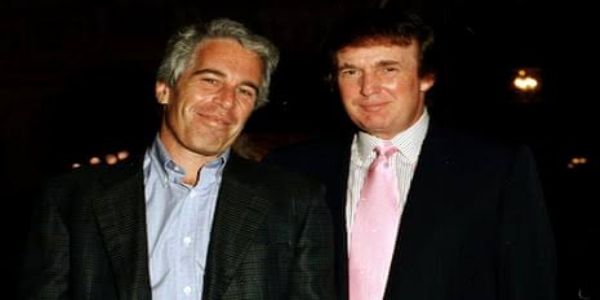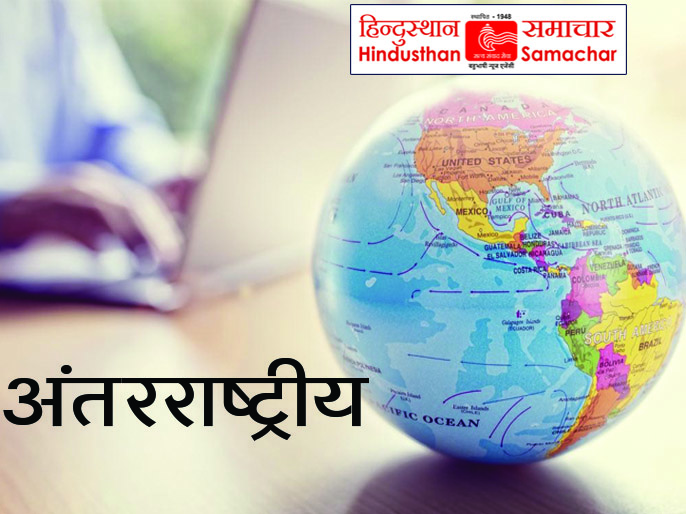







Beijing, 3 September (H.S.): Beijing witnessed an unparalleled military spectacle on Wednesday(September 3), as China commemorated the 80th anniversary of the end of World War II with its largest-ever Victory Day Military Parade. The event, held in Tiananmen Square, featured a formidable assembly of over 10,000 troops, advanced weaponry—including hypersonic missiles, state-of-the-art drones, and revolutionary laser defense systems—and drew the attendance of 26 world leaders. Among the principal figures were Chinese President Xi Jinping, Russian President Vladimir Putin, and North Korean leader Kim Jong Un, marking a rare convergence of these powerful autocrats in a unified display of defiance toward the Western order.
President Xi Jinping, leading the proceedings from an open limousine, delivered a compelling speech that underscored China’s military modernization and national resurgence. “The Chinese nation is a great nation that is never intimidated by any bullies,” Xi declared, positioning the parade as a signal against perceived Western hegemony. He articulated a vision of peace but warned that humanity faces the stark choice between dialogue and conflict, underscoring China’s aspirations for a new global framework distinct from U.S. dominance.
The presence of Putin and Kim Jong Un added substantial diplomatic weight to the occasion. It was the first known instance of the three leaders appearing together publicly, symbolizing a tacit alliance amid global geopolitical tensions. Kim Jong Un’s visit carried deeper significance, marking his first major multilateral appearance and bringing with him his daughter, Kim Ju Ae, who made her international debut trailing her father upon arrival in Beijing. Widely regarded as his likely successor, her presence alongside leaders like Xi and Putin heralds a potential future where she may navigate the complex geopolitical environment shaped by these alliances.
Spectacular Military Display and New WeaponsThe parade showcased China's most advanced military technology, reflecting Xi's vision to modernize what is now the world's largest standing army. Highlights included hypersonic missiles such as the naval-capable YJ-17, nuclear-capable intercontinental ballistic missiles displayed jointly by land, sea, and air units, and a most powerful laser air defense system mounted on land vehicles and warships .
Cutting-edge features included:
-Over 10,000 troops marching in precision formations.
-Flyovers by stealth fighters including the new J-20, J-35A, and carrier-based J-15 variants.
-The debut of extra-large undersea drones (XLUUVs), signaling China's growing undersea warfare capability.
-A variety of anti-ship missiles (YJ-15, YJ-19, YJ-20) designed to threaten US carrier groups.
-The use of nuclear-capable missiles like the DF-5C and newer models enhancing China's strategic deterrent
According to Chinese Defense officials, this parade not only celebrated historical victory but emphasized China's preparedness to “safeguard national sovereignty” and “uphold world peace” through technological innovation and military readiness. The tightly controlled event restricted public access along the route, with millions watching via broadcasts reflecting immense national pride expressed by spectators waving Chinese flags.
Western leaders largely abstained, while Xi’s entourage welcomed dozens of guests aligned with or conciliatory to Beijing, including Myanmar’s military chief and Iran’s president. This calculated demonstration of military might and diplomatic posturing sent a clear message that Beijing, alongside Moscow and Pyongyang, seeks to challenge the prevailing U.S.-led international order with an alternative coalition emphasizing mutual benefit and peace through strength.
As the parade concluded, 80,000 doves were released symbolizing peace, alongside aerial displays that spelled out “Peace Will Prevail” and “Justice Will Prevail,” blending patriotic fervor with assertive messaging on the global stage. For Xi, Putin, and Kim Jong Un, the day represented a narrative of resilience, alliance, and a shared vision for a reshaped geopolitical landscape.
This grand event in Beijing is poised to resonate well beyond China’s borders, illustrating the evolving dynamics of international power where these leaders stand united in a historic moment reflective of both past triumph and future ambitions.
Hindusthan Samachar / Jun Sarkar







